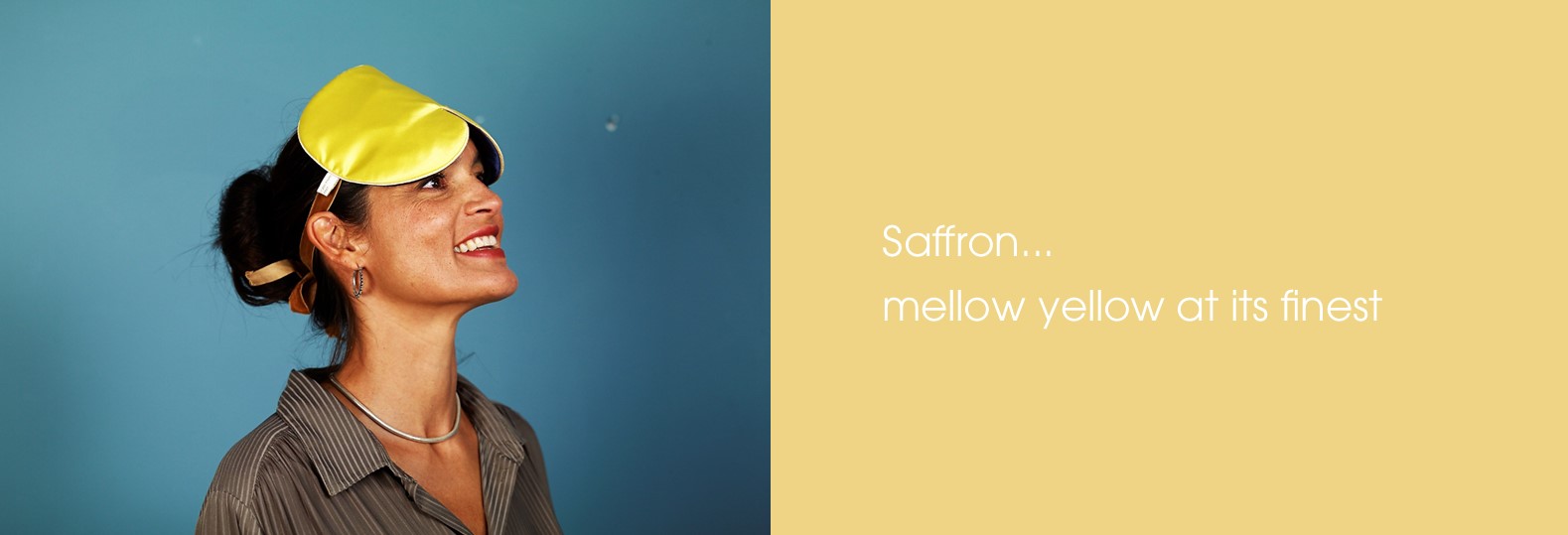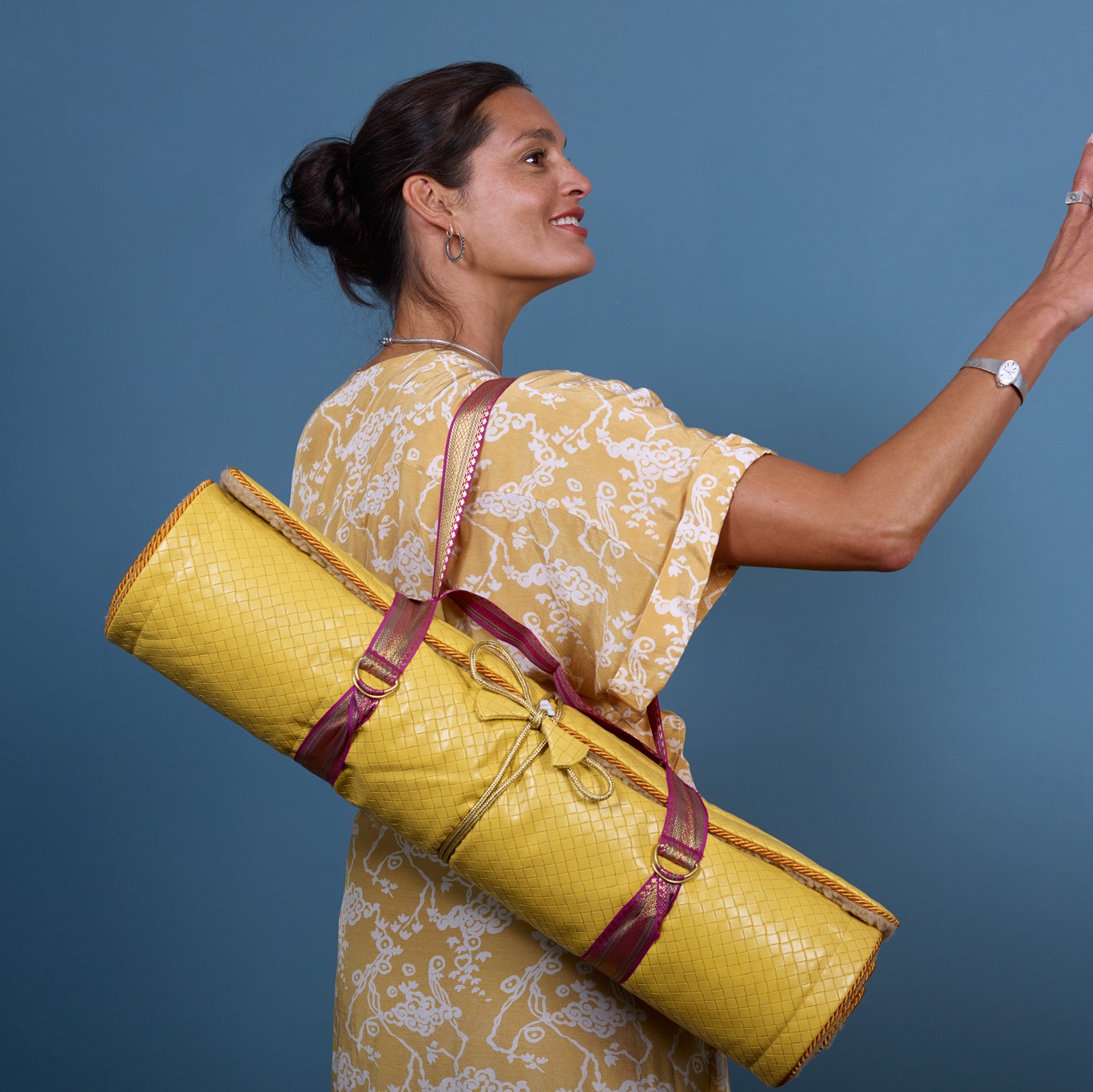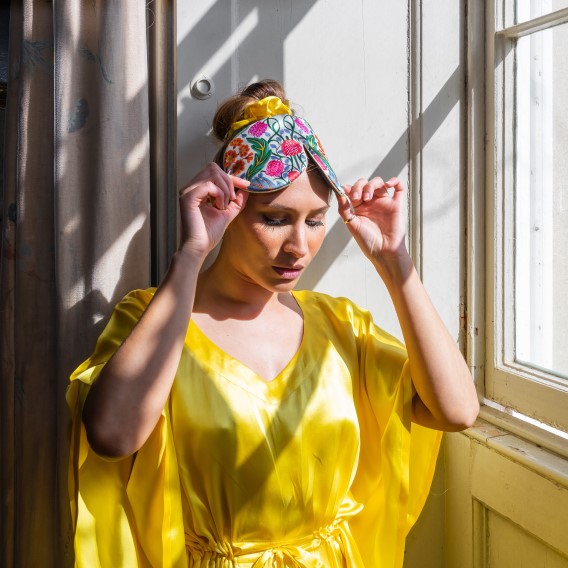The history of saffron – Lovely mellow yellow!
Saffron is a vivid and warm hue that has captivated people for centuries. It is a colour that is associated with luxury, spirituality, and exoticism and we just adore it.
Colour theorists say yellow creates warmth, cheer, more mental activity, and extra energy in our muscles. It grabs our attention, helps activate our memories, encourages communication, enhances our vision, builds confidence, and even stimulates the nervous system. Add black and you get the easiest colour combination to see at a distance.
Yellow is the colour of the sun. It’s beautiful. And Saffron is one of the loveliest yellows of all. A warm shade rather than a cool lemony yellow. So where does saffron come from, and what’s the story behind it? Let’s explore.
“I’m just mad about Saffron, she’s just mad about me... they call me mellow yellow” (Donovan, Mellow Yellow, number 8 in the charts in 1967)
Saffron – an ancient spice
Saffron comes from the pale blue-purple saffron crocus. The crimson stigma and styles, called threads, are collected from the flowers then dried to use as seasoning, food colouring, and fabric dye. Some say saffron originally came from Iran, others believe it was first used in Greece or Mesopotamia. Wherever it was first harvested and used, these days the saffron crocus grows throughout Eurasia an across North Africa, North America and Oceania.
The spice’s long history touches a host of countries, used in all sorts of curious ways. The ancient Sumerians used it in medicines and magic potions. It was traded by the Minoans more than four thousand years ago. The ancient Persians cultivated it and, in some places, the threads themselves were woven into extraordinary textiles to offer to the gods.
It has been used in perfumes, medicines, and body washes, mixed into teas to cure melancholy and even used as an aphrodisiac. The Persians used to drug their enemies with it, and Alexander the Great used it to cure war wounds. In Greece they added it to their baths. It was popular in the Levantine cities of Sidon and Tyre, both in Lebanon, where a man called Aulus Cornelius Celsus prescribed it for wounds, coughs, colic, and scabies. The Romans loved it too, using saffron to enhance their food. They took it with them when they invaded Gaul and grew it when they settled there. When the Roman Empire fell, so did European saffron production. It didn’t return to France until the 8th or 14th century, depending on which theory you choose.
Saffron was so important to the Minoans that they painted pictures of it in their stunning frescoes. In ancient Egypt, Gaza and Rhodes, there are records of it being used by courtesans to create fragrant water to bathe in, in mascara, to scent potpourri, and in medicines. Cleopatra did the same, adding it to her legendary baths.
Saffron arrived in North America via members of the Schwenkfelder Church, who took a case-load of corms with them when they left Europe. By 1730 it was being grown across eastern Pennsylvania by Dutch immigrants. People in Spain’s Caribbean colonies loved it and bought it in huge quantities. At one point it cost more than gold. After the 1812 war in Europe, the trade collapsed. These days it’s still grown in Pennsylvania, mostly in Lancaster County.
And If you’ve ever puzzled over the curious name of the pretty Essex town Saffron Walden, you’re right – it was named after saffron, a prime growing area and trade centre for the spice in the 1700s and 1800s. Later abandoned as a crop, it wasn’t reintroduced until 2013. These days it’s also grown in Cheshire.
Nowadays it is usually used for creating exotic cuisine, its unique aroma, slightly metallic with hints of honey, grass, and hay and the luminous orange colour and unique flavour contributes to some of the world’s most wonderful dishes. But at £6,500 a kilo it is one of the world’s most expensive cooking spices and dyes.
Harvesting takes a lot of hard work, and it can only be done by hand, which is partly why it costs so much. One kilo of saffron contains around 440,000 hand-picked saffron stigmas from about 150,000 flowers, which takes an experienced picker about 40 hours to gather. A single flower contains just 30mg of fresh saffron, 7 mg when dried. You can see why it’s so precious.
How about the fabric dye side of saffron?
In ancient Greece and Rome, saffron was used to dye textiles for the wealthy and elite classes. The dye was highly prized for its bright and vibrant colour, and it often reserved for use on special occasions or for ceremonial garments.
Saffron was also used as a dye for clothing and textiles In the Middle East and Asia, being particularly popular in Persia (modern-day Iran), where saffron-coloured textiles became a symbol of royalty and nobility. A common dye throughout across the year, during the Middle Ages, saffron was used in many religious ceremonies and used to colour the robes of Catholic monks in Europe. In India and China, it was used to add colour to silk and even in miniature paintings, where it was used to depict the rich colours of the region.
Today, saffron is still used as a dye for textiles, although its high cost and limited availability make it less common than other natural dyes. And although Buddhists still wear saffron-coloured robes to signify equality with one another they’re usually dyed with turmeric, a slightly harder-looking yellow but a lot more affordable.
Whether used as a spice or a dye, one thing’s for sure – saffron yellow is a gorgeous colour that makes us feel happy. And that’s good enough for us!
Have you seen our fabulous saffron products? They might not be magic but they’re lovely-looking and they work perfectly to help you relax, chill, sleep better, look wonderful - and love life more. You might want to try our soft, smooth saffron yellow Pure Silk Lavender Eye Mask, our Pure Mulberry Silk Anti Ageing Pillowcase, or our Pure Mulberry Silk Hair Turban.






